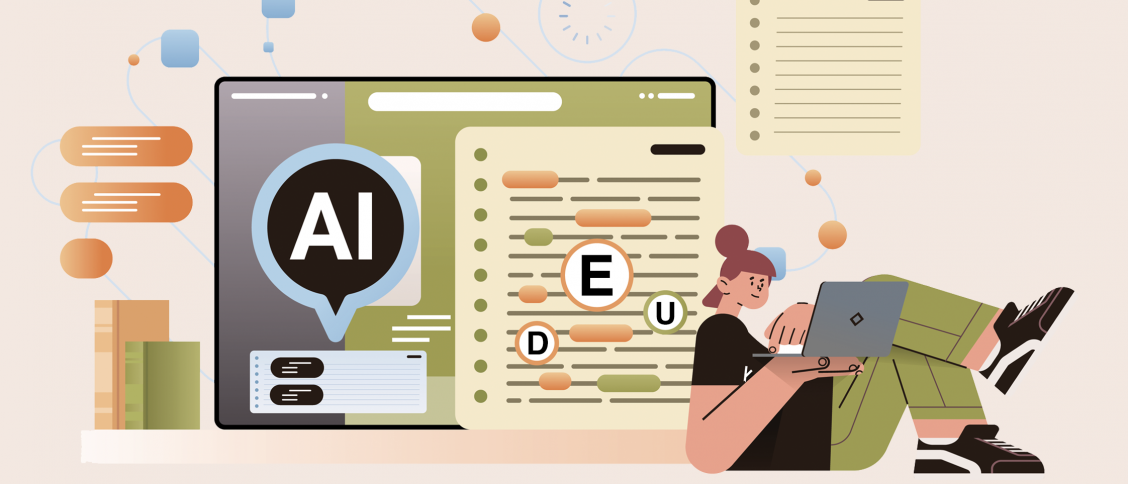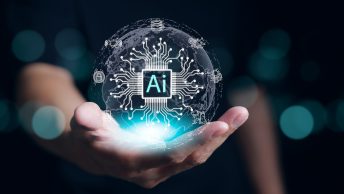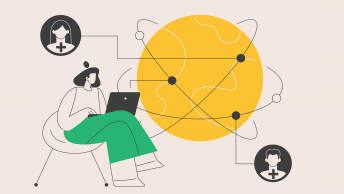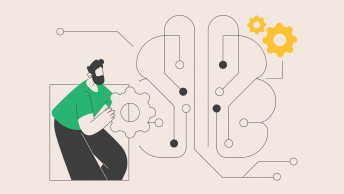Artificial intelligence (AI) advancements are disrupting many areas of our lives, and education is the most significant one. OpenAI’s recent ChatGPT-4o and the future of Artificial General Intelligence (AGI) shows that AI is becoming more than just a tool; it can also be a teacher. The idea of AI and AGI acting as tutors offers a great chance to change the process of how we learn. This change is fundamental because education shapes our future as a species. There are different voices in the field proclaiming that AI can take the jobs of teachers, but my opinion is it will coexist with people serving them as assistants both for teachers and students. But let’s not get ahead of the conclusions. To lead to this point, we need to talk about the groundline of education: the purpose – why we are passing knowledge to our kids through problems we face nowadays and then let’s take a glimpse into the future at how it could be improved with AGI or even advanced AI.
The curious nature of humans
Let’s start with the most common fact that, as a species, we are born to learn and adapt. From a young age, humans exhibit an inherent curiosity that drives their learning process. Research indicates that four-year-olds ask between 200 to 300 questions a day, amounting to an average of 40,000 questions between the ages of two and five. This desire to explore and understand the world suggests that the ability to learn is hardwired into our development as humans. Even without formal education, humans are predisposed to seek knowledge, driven by a relentless curiosity. It’s not actually a human advantage more than any other species on Earth since this learning ability allows us (and them) to survive longer and in better shape.
Let’s start by defining the purpose of education to answer the question at the end of this article—how will AI influence the way we learn and pass knowledge to future generations?
The Purpose of Education
Education serves several essential purposes that contribute to individual growth and societal development. These purposes include:
Brain development: Education stimulates cognitive growth and brain development. Engaging in various learning activities helps form neural connections, enhancing memory, critical thinking, and problem-solving skills. A well-developed brain is better equipped to handle complex tasks and adapt to new challenges.
Teamwork: Collaborative learning experiences foster teamwork and communication skills. Through group projects and classroom interactions, students learn the importance of cooperation, empathy, and social dynamics. These skills are crucial for success in both personal and professional environments.
Competences for future work: The job market constantly evolves, and education aims to equip students with the skills required for future employment. This includes technical skills relevant to specific fields and soft skills like adaptability, creativity, and resilience. Preparing students for the workforce ensures they can contribute effectively to the economy.
Ethics: Education plays a vital role in instilling ethical values and moral reasoning. It helps students understand the importance of integrity, responsibility, and respect for others. Ethical education is essential for developing individuals who can make just and fair decisions.
Social education: Understanding how society functions is another critical aspect of education. Students learn about economics, cultural diversity, and civic responsibilities. This knowledge is essential for active and informed citizenship, enabling individuals to participate meaningfully in their communities.
Life skills: Practical life skills are also a crucial component of education. These skills include financials, time management, health and wellness, practical skills (how to create or repair), and other everyday competencies. Life skills education prepares students to learn the complexities of adult life and prepare them for living in their own families.
Overall, education aims to discover and amplify each child’s best potential and prepare them for adulthood.
However, this goal often falls short due to the standardized curriculums that all students must follow, regardless of their individual strengths and interests. Addressing this is crucial for realizing the full potential of education, and AGI could help us with that. Before we reach those conclusions, let’s examine the problems we are struggling with today.
The Reality
“Investments on AI – to make machines smarter… there is no limit to the amount of money that is pumped into it. The investment in HI (human intelligence) to make humans smarter… it’s just sad.”
Watch the full clip here

Will I am
Enterpreteur and music producer. Note on AI vs HIThe quote above reflects the reality we are living in. That is true; we are spending more money on AI and developing AGI than human intelligence, but on the other hand, paradoxically – raising AGI and using AI in education could potentially solve lots of those problems. If we are more innovative and use AI to amplify education, it will be more achievable and better. Let’s take a glance at the issues to solve:
Financial struggles: In many countries (Poland is a discreditable example), the education sector faces significant financial problems. Simply speaking, there is no money in that. The reason for that is that we rarely think ahead as a species, and politicians prefer to invest money in short-term goals (often burning our taxes).
Teachers and educational staff are often underpaid, which affects their motivation and the quality of education they can provide. Schools in low-income areas lack resources such as textbooks, computers, and laboratory equipment, widening the educational quality gap between affluent and poorer communities.
Outdated teaching program. Many educational systems rely on outdated curricula that do not reflect current knowledge or the skills needed in today’s world. This gap between what is taught and what is needed for modern life and work leaves students unprepared for the future. Subjects are often taught in isolation, missing the interdisciplinary approach necessary to solve complex real-world problems.
Traditional methods. Most schools still stick to old-school routines such as homework, tests, and grades. These methods focus on memorization rather than critical thinking and creativity. They also place immense pressure on students, leading to stress and burnout. This traditional approach fails to accommodate different learning styles and needs, leaving many students behind.

Lack of access to technology. While technology has the potential to transform education, not all students have access to it. Digital divides, especially in rural and low-income areas, prevent many students from benefiting from online resources and learning tools.
Inadequate teacher training. Teachers are the cornerstone of effective education, yet many are not adequately trained to deal with the diverse needs of their students. Professional development opportunities are often limited, and many teachers lack the skills to integrate new technologies or innovative teaching methods into their classrooms.
Overcrowded classrooms. In many schools, especially in developing countries, classrooms are overcrowded, making it difficult for teachers to give individual attention to students. This situation is influencing effective learning and makes classroom management a significant challenge.
Lack of practical life skills. Many educational systems focus heavily on academic knowledge at the expense of practical life skills. Students often graduate without knowing how to manage finances, cook, or handle basic household tasks, leaving them unprepared for adult life.
Mental health issues. The pressure to perform well academically can lead to mental health issues among students, including anxiety and depression. Schools often lack the resources to provide adequate mental health support, exacerbating these problems.
Inflexible education systems. Education systems are often rigid and slow to adapt to changes in society and the job market. This inflexibility prevents the adoption of innovative teaching methods that could better prepare students for the future.
How will AI/AGI help us educate future generations?
Now when we know the most important problems to be solved, let’s answer the question of how AI/AGI can help us in those areas:
Meta-education. AGI can lead to the concept of meta-education, where teaching methods are completely transformed. Instead of traditional subjects, education can focus on broader competencies and skills that span multiple disciplines. For example, critical thinking, problem-solving, and creativity can be taught through projects that involve elements of science, art, and literature. This holistic approach can prepare students better for the complexities of the real world.
Personalized learning. Through deep analytics and continuous learning, AGI will be able to understand each student’s strengths and weaknesses. By analysing vast amounts of data, AGI can tailor educational experiences to fit each student’s unique needs. This personalized approach ensures that students receive the right level of challenge and support, significantly enhancing their learning outcomes.
Learning schedules suited to the student. With access to a student’s biorhythm and medical history, AGI can determine the best time, pace, and methods for learning for each individual. For instance, some students may learn best in the morning, while others may be more alert in the afternoon. AGI can schedule lessons and breaks to maximise each student’s ability to absorb and retain information, leading to more efficient and effective learning.
Objective feedback. AGI will provide positive reinforcement and feedback based on metrics rather than the subjective mood of a teacher. This can lead to a more consistent and fair assessment of student performance. Students will receive constructive feedback that leads them towards their improvement, helping them stay motivated and on track.
Comprehensive Data Access
AGI will have access to all human-generated data, allowing it to pull from a vast knowledge repository. This means that students can benefit from the latest information and research across various fields. AGI can provide up-to-date learning materials and resources, ensuring that education keeps pace with advancements in knowledge and technology.
Continuous Improvement
AGI can continuously learn from its interactions with students, improving its teaching methods over time. This ability to adapt and evolve ensures that the educational experience remains relevant and effective. AGI can identify what works best for each student and adjust its strategies accordingly, providing a highly responsive and adaptive learning environment.
Supporting teachers
AGI will not replace teachers but will support them in their roles. By handling administrative tasks, grading, and providing supplementary instruction, AGI can free up teachers to focus on more meaningful interactions with their students. Teachers can spend more time mentoring, inspiring, and addressing individual student needs, enhancing the overall educational experience.
Lifelong Learning
AGI can facilitate lifelong learning by providing continuous educational opportunities beyond formal schooling. Adults can benefit from personalized learning experiences tailored to their career needs, personal interests, and life goals. This flexibility ensures that learning is a continuous process, helping individuals stay relevant in a rapidly changing world.
All of those areas will eventually lead to better education, which I hope will make us better humans. The change is happening as we speak. Some schools are implementing AI into the education process, like Newark, a US public school, which uses algorithms to improve its teaching programme.
With the release of Chat GPT 4o, all users of this tech can support their kids in the learning process. And it’s just the start. In 3 to 5 years, we will see more use of AI in the education process since its advantages are too significant to be overlooked.
Summary
I am a parent myself, and I often think about the future of our kids. I have been asked what we should do in times of uncertainty where technology disrupts many fields. In terms of education, I’m suggesting we completely change how we perceive the goal of education nowadays.
We should pivot our thinking from “laying the base for the future jobs for our kids” to “amplifying the creative side of human nature”. So it seems that the transformation of education will come from the point of teaching our kids tangible goals like the economy and preparing for future work more into soft human skills like empathy and creativity (in the broad sense). No one knows how fast the change will happen, but for sure, the next decades in education will be different from the times we experienced as a student. We must understand that and educate everyone, from the decision-makers to our kids.
Since AI will soon dominate the job market (as I described in my other article, The Era of Me—post-AGI evolution of work and economy), we should teach our kids critical thinking, empathy, social skills, and any form of creativity. Those are at the core of being humans, after all.
Thank you for reading.
If you like this article, I encourage you to read the other articles on AGI.




